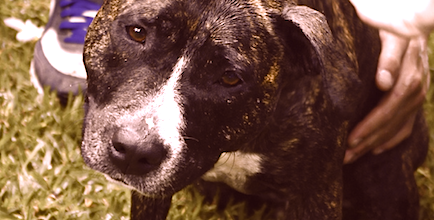Epileptic Seizures in Dogs
Epileptic seizures in dogs, for which there may be many causes, can sometimes be remedied with anti-convulsant medications.

It is distressing to see your pet in the grip of an epileptic seizure. Unfortunately, fits are not uncommon and can affect 1 in every 200 dogs.
However, the good news is that effective anti-convulsant medications are available. New and improved drugs are being developed and sold all the time.
Epilepsy is a “diagnosis of exclusion,” meaning that if after testing a dog’s organ function and imaging his brain no reason is found for the fits, then the condition is labeled as epilepsy.
There may be a genetic element to epilepsy, with some dog breeds more likely to have seizures than others.
These breeds are:
- German Shepherd
- Belgian Shepherd
- Keeshund
- Irish Setter
- American Cocker Spaniel
- Labrador Retriever
- Golden Retriever
- Border Collie
The dogs tend to be young (6 months to 5 years old) when they have their first seizure, and continue to have episodes throughout their life.

Don’t leave your pet’s safety to chance
Sign up for Petful recall alerts today.

Symptoms
If your dog has a seizure, stay calm. It is not a pleasant thing to witness, but when your dog recovers, he will have no recollection of the event.
Some dogs show warning signs of an impending seizure. Their behavior changes a short time beforehand. They seem:
- Restless
- Clingy
- Agitated
During the fit, the dog is unconscious and will not respond to his name.
Commonly, the dog lies on his side and becomes rigid. His legs stretch out and sometimes his head arches back. His legs paddle against the air and his jaw may shudder and champ. It is not unusual for the pet to lose control of his bladder and bowels.
A fit usually lasts between 30 seconds and 3 minutes, after which the dog comes to and may be hungry and thirsty. Something to be alert for is that seizures often occur in “clusters” or a group of fits in one day.
Causes
A diagnosis of epilepsy means no trigger is found for the seizures, and the most likely reason is that the dog is genetically programmed to have epilepsy.
A fit is an electrical storm in the brain. Overstimulation of some areas, combined with a loss of inhibition by neurons designed to dampen brain waves, may allow a seizure to break through.
Some dogs have several seizures on the same day. This is known as a cluster. If you think about fits in terms of walking through a field of long grass, the first fit tramples down the grass, creating a path that makes it easier for the next seizures to follow.
If this is the case with your pet, the vet may supply a medication to use after a fit to dampen down the over-excitable nerves and, metaphorically, block the path with a wall.
Diagnosis
Your veterinarian must rule out problems that can cause seizures such as low blood sugar or a liver shunt. If a health issue is identified, treatment of that condition should stop the seizures.
If nothing is found on a blood panel, the next step is an MRI scan. This shows physical problems in the brain such as inflammation linked to infection or a solid mass or tumor. Only if nothing is found can the condition truly be called “epilepsy.”
In this video, Dr. Fiona Caldwell, DVM, explains why your veterinarian wants to run tests before starting treatment:

Treatment
When starting treatment, the vet will discuss benefits versus risks of anti-convulsant medication.
If the seizures are mild and occur rarely, such as one every 6 months, she may decide against long-term drugs. If, however, the seizures are severe, multiple or very frequent, then preventive medicines may help.
- The most widely used anti-convulsant is a drug called phenobarbitone, which must be given at 12-hour intervals.
- Sometimes other drugs, such as potassium bromide, are added to amplify the effects of the first medication.
- If the patient responds poorly to these, a number of human drugs can also help. Also, a new canine medication called imepitoin — sold as Pexion — promises excellent control with few side effects.
- If your dog has cluster seizures, your vet may prescribe to give after a seizure. The diazepam is absorbed across the rectal mucosa to soothe brain waves and reduce the chance of another seizure following the first.
Prevention
There are anecdotal stories of dogs having fits resulting from food allergies, but this has not been scientifically proven. If a dog is genetically programmed to have epilepsy, then it is a matter of control rather than cure and committing to regular anti-convulsant medication.
References
- “Prevalence and risk factors for canine epilepsy of unknown origin in the UK.” Kearsley-Fleet, O’Neill, Volk, Church & Brodbelt. Vet Rec., 172(13): 338.
- “Idiopathic epilepsy in 125 dogs — a long-term study.” Jagg & Bernadini. JSAP, 39, 23–29.
- “Current concepts in management of canine epilepsy.” Forrester, Boothe & Troy. Comp Cont Ed Vet, 11: 811–820.








